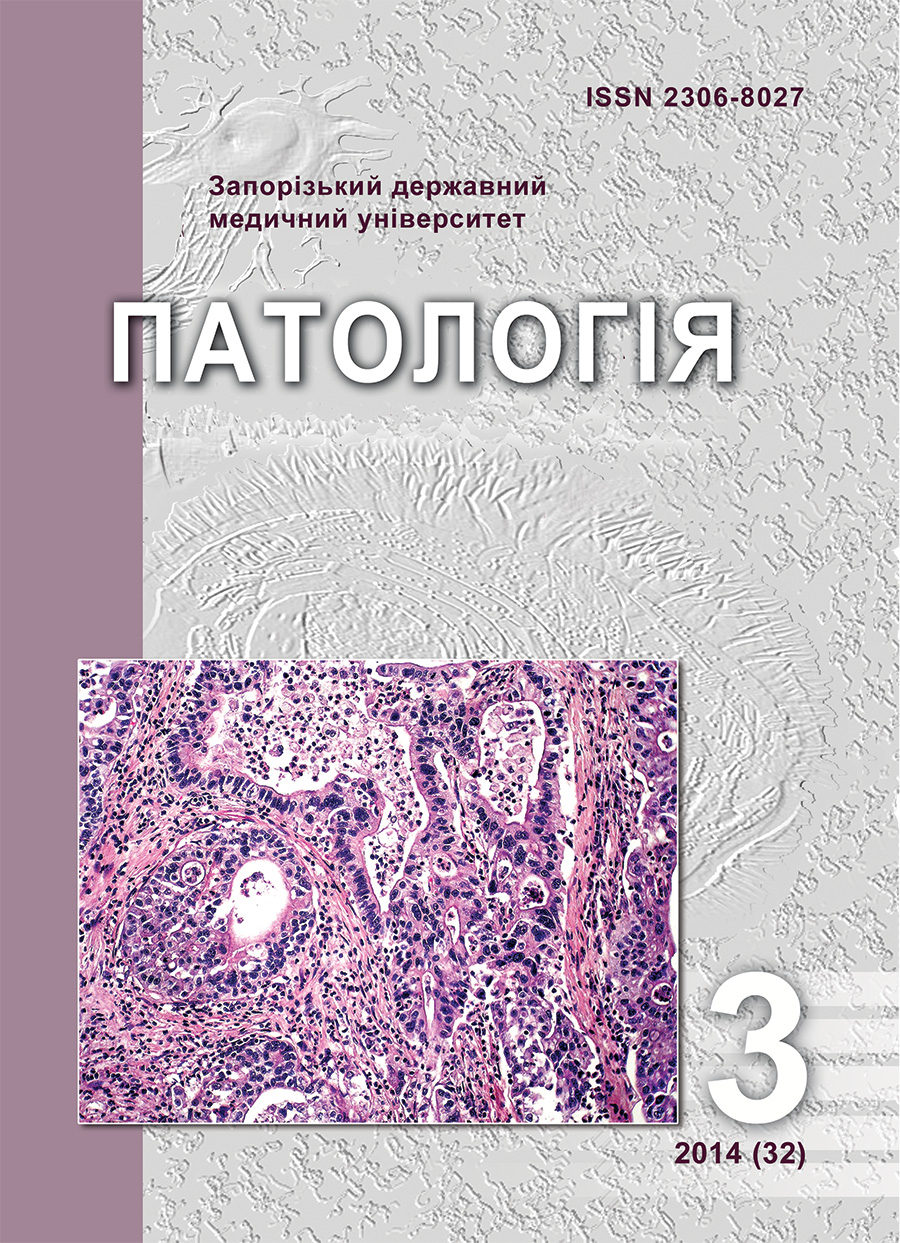The changes of neurologic functions of rats in the modeling of hemorrhagic stroke
DOI:
https://doi.org/10.14739/2310-1237.2014.3.36839Keywords:
геморагічний інсульт, когнітивні порушення, неврологічний дефіцит, щуриAbstract
The brain stroke is followed by the development of neurologic deficit, which worsen the course of the disease and the further prediction for recuperation.
Aim.To examine the changes of neurologic functions of rats in the modeling of hemorrhagic stroke.
Methods and results. In order to compare behavioral and emotional reactions and physical efficacy while modeling hemorrhagic stroke in 70 male rats of two age groups the degree of neurologic deficit was studied by “Opened field”. The initial and recurrent hemorrhagic stroke was simulated using stereotactic method by mechanical destruction of brain tissue in the internal capsule within the right hemisphere using mandrin-knife along with introduction of 0.1 ml of autologous blood. The recurrent HS was simulated using the same model one month after initial HS. It was defined, that in the structure of neurologic deficit unilateral process prevails, and in the gerontological aspect dynamics of the bilateral process with low spontaneous recoveryprevail.
References
Buresh, Ya., Bureshova, O., & H'yuston, Dzh. P. (1991) Metodiki i osnovnye e`ksperimenty po izucheniyu mozga i povedeniya [Techniques and basic experiments to study the brain and behavior]. A. S. Batuev (Ed). Moscow. [in Russian].
Hrintsova, O. Ye. (2010) Vplyv hliukozaminu hidrokhlorydu na vyzhyvanist ta rozvytok nevrolohichnoho defitsytu u shchuriv za umov eksperymentalnoi hostroi tserebralnoi ishemii [Effect of glucosamine hydrochloride on survival and development of neurological deficit in rats in experimental acute cerebral ischemia]. Proceedings of the 3rd International Scientific Congress of Young Scientists and medical students, (p. 283). Ternopil. [in Ukrainian].
Dubenko, O. Ye., Kostrovska, G. Ye., & Kostrovskyi, S. L. (2007) Prychyny i naslidky lakunarnykh insultiv holovnoho mozku [Causes and consequences of lacunar stroke brain]. Ukrainskyi nevrolohichnyi zhurnal, 1, 7–10. [in Ukrainian].
Lazareva, E., Kuftan. M., & Zharova I. (2011) Vliyanie programmy fizicheskoj reabilitacii na vosstanovlenie funkcii verkhnej konechnosti u bol'nykh posle operativnogo lecheniya gemorragicheskogo insul'ta [Effect of physical rehabilitation program to restore the function of the upper limb in patients after surgical treatment of hemorrhagic stroke]. Sportyvnyi visnyk Prydniprovia, 3, 110–112. [in Ukrainian].
Kulagin, D. A., & Fedorov, V. N. (1969) Issledovanie e`mocional'nosti u krys linii Vistar i Krushinskogo-Molodkinoj metodom «otkrytogo polya» [The study of emotion in Wistar and Krushinsky-Molodkina rats by method of «open field»]. Genetika povedeniya, (p. 35–42). Leningrad: Nauka [in Russian].
Rodina, V. I., Krupina, N.A., Kryzhanovskij, G. N., & Oknina, N. B. (1993) Novyj metod ocenki trevozhno-fobicheskikh sostoyanij u krys [New method for assessing anxiety-phobic states in rats]. Vysshaya nervnaya deyatel'nost', 43(5), 1006–1017. [in Russian].
Kundiiev, Yu. I. (Ed). (2009) Suchasni problemy bioetyky [Modern Problems of Bioethics]. Kyiv: Akademperiodyka. [in Ukrainian].
Badjatia, N., & Rosand, J. (2005) Intracerebral hemorrhage. Neurologist, 11(6), 311–324.
(1986) European convention for the protection of vertebrate animals used for experimental and other scientific purposes. Councilof European. – Strasbourg, 123, 51.
Guresir, E., Beck, J., Vatter, H., Setzer, M., Gerlach, R., Seifert, V., & Raabe, A. (2008) Subarachnoid hemorrhage and intracerebral hematoma: incidence, prognostic factors, and outcome. Neurosurgery, 63(6), 1088–1093. doi: 10.1227/01.NEU.0000335170.76722.B9.
Downloads
How to Cite
Issue
Section
License
Authors retain copyright and grant the journal right of first publication with the work simultaneously licensed under a Creative Commons Attribution License that allows others to share the work with an acknowledgement of the work's authorship and initial publication in this journal.



